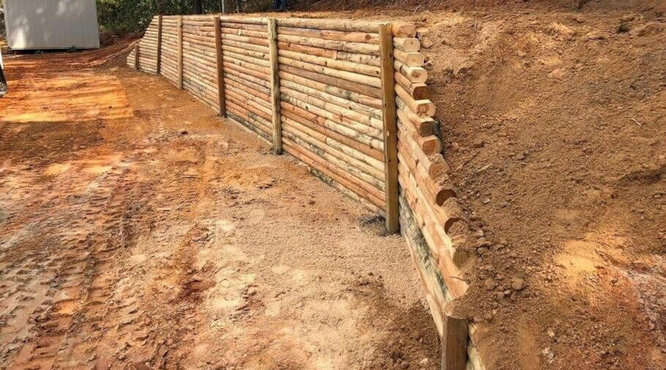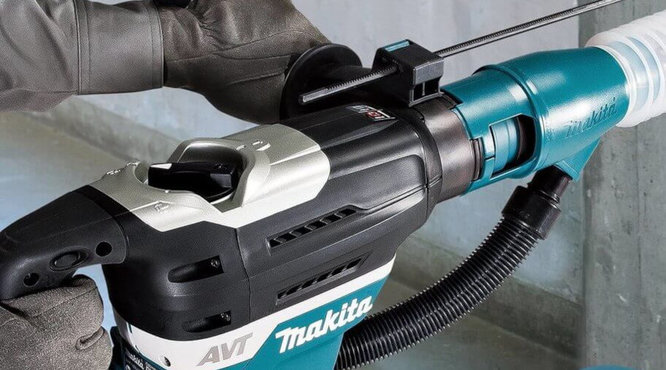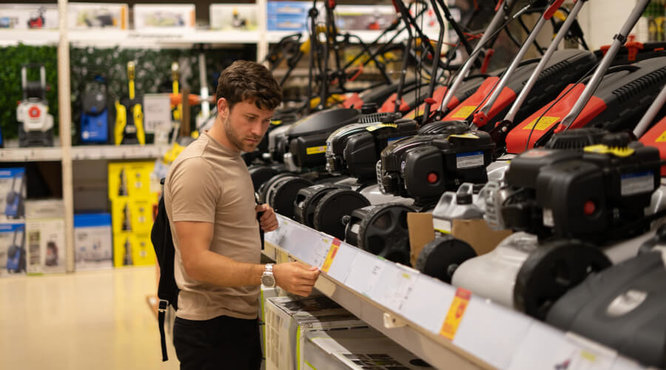How To Use a Brush Cutter & Strimmer
What is a Strimmer?
A strimmer is a versatile garden tool for cutting grass. They feature a cutter, shaft, handle, and motor. Their design allows you to cut grass in a precise way. Strimmers are ideal for cutting in borders, on uneven and sloped terrain, and around objects. With one, you can trim around and near to trees, walls, structures, and ornaments with ease. They allow you to trim grass in straight lines and in a consistent, uniformed way. You can also use them to clear some overgrown vegetation.
Strimmers have a nylon line on a spool. The motor spins the spool at a high rate. As the spool rotates, the nylon string becomes taut, allowing it to sever grass and light foliage.
What is a Brush Cutter?
A brush cutter is very similar to a strimmer. But, instead of a nylon string on a spool, they have metal cutting heads. Brush cutters also tend to have more powerful motors.
These tools are better for garden clearing. They can cut through dense brush, and thick vegetation. Brush cutters are ideal for clearing areas when a lawn mower would struggle.
Some common names for strimmers or brush cutters. - The name ‘strimmer’ is originally a brand name. It derives from string trimmer. You might also be familiar with the names grass cutter, clearing saw, brush saw, scrub cutter, line cutter, whipper snipper, weed eater, weed whacker, weedwacker, and weed whip!
Although brush cutters and strimmers do differ, the terms tend to be interchanged. Some models even have cutting heads that you can swap, allowing you to cut with a line or a blade.
Types of Trimmer
The other feature that can differ between various trimmers (strimmers and brush cutters) is the motor. How the motor is powered can determine how powerful the tool is. It will also make them suitable for different applications.
There are three common ways that a trimmer’s motor is powered.
Petrol engines - you can find 2-stroke and 4-stroke petrol engines. These trimmers are very powerful, and highly portable. They are perfect for clearing spaces.
Cordless battery power motors - these are lightweight and mobile. But, they do need recharging or extra battery packs to keep running.
Electric motors - these are the cheapest type of strimmer you can buy. They are light and fairly powerful. However, they do need to be plugged into a socket. The cables mean that this type of trimmer is restricted. They are only really suitable for domestic use and small outdoor spaces.
Health & Safety
As with any power tools, health and safety when using a trimmer is first and foremost.
- Wear protective equipment. Trimmers can be dangerous, so you must wear proper personal protective equipment. Always use safety goggles or a full face screen and hard hat. Wear ear defenders like mufflers or plugs. Only work wearing heavy-duty gloves, full length, rugged trousers, and safety boots.
- Adjust the components. Most trimmers come with handles that you can alter the position of so they're comfortable for you. Make sure you put the handles in the best position and if you are wearing a harness, adjust it to match your height.
- Keep an eye out for hazards. Look out for trailing cables, especially if you're using an electric trimmer. Also look out for objects that would be in your cutting path. Stones and discarded items can be hazardous.
- Expect debris. The rotating action of the cutting line or blades can result in flying debris. Watch out small stones and other items that you could hit. They can be flung at people and windows with ease. Spend five to ten minutes clearing the area before you start cutting the foliage.
- Keep your distance. It is best to keep a safe distance from other people when using a trimmer. Try to keep at least 50 feet away. Also keep away from the cutting head when the trimmer is in operation. Even if you have all the correct protective gear on, they can still be dangerous.
- Ensure attachments are mounted. Make sure you attach the cutting heads and handles securely to prevent them from disconnecting during use.
- Take breaks. The vibration and noise produced by any equipment can lead to fatigue and other problems. Protect yourself from hand-arm vibration syndrome and other conditions. Take regular breaks and limit your working periods.
- Use in well ventilated areas. If you are using a trimmer with a petrol engine, make sure you start it and work in a well-ventilated area. These tools are best suited to large outdoor spaces. If you run out of fuel, allow the engine to cool down before refuelling.
How To Use a Brush Cutter & Cutting Techniques
It's important to know the spin direction of your trimmer. As you cut grass, the cutting line or blades will displace the trimmings away in the direction it's cutting.
If the cutting head rotates clockwise, trimmings will eject to the right. This means that the left side of the tool is the best cutting edge. Likewise, if the cutting head rotates anticlockwise, trimmings will be ejected to the left, and the right side of the tool will be the most effective cutting edge.
If your trimmer rotates clockwise, you should work from the left to the right. This motion will ensure you have the clearest view of the work area. If you work in the opposite direction to the trimmer's spin direction, you'll obscure your cutting path with waste.
Parallel Cutting
The basic technique for cutting with a trimmer. Parallel cutting involves holding the tool level as you pass it over grass or foliage. The cutting head makes a straight cut of even length.
Tapering
Tapering creates a faded effect approaching objects or borders. This is similar to a haircut! You tilt the cutting head slightly and cut towards the object. Gently lower the cutting head as you approach the object to create a gradual gradient. This technique looks attractive, professional, and natural. But, it takes some getting used to and is difficult to master.
Edging
Edging a border gives you a clean cut along a straight line. It is ideal for the edge of a lawn, along a path or flowerbed. Edging offers a blunt cut that provides a clean, sharp finish. You achieve it by turning the cutting head 90 degrees, so the cut is made vertically. You can then walk right along the edge, cutting as you go.
Scything
Scything is ideal for covering large areas with longer grass. It is also great for cutting around trees and posts. Scything involves swinging your trimmer in a 'U' shape. You can either cut around you to cover a large area, or around an object. If you overlap your scythes, you achieve a nice even cut. If you leave a gap, and space the scythes out, you can achieve a natural looking, wavy finish.
Screeding
Screeding trims weeds and other foliage growing between paving slabs or through cracks and gaps in pavements. You can screed by tipping your cutting head towards the base of the weed, keeping it just above the surface. You will need a steady hand for this technique. You can easily damage the nylon string of a strimmer trying to screed. Brush cutters with blades may not be suitable for this type of cutting, as you could damage the pavement and the blades.






